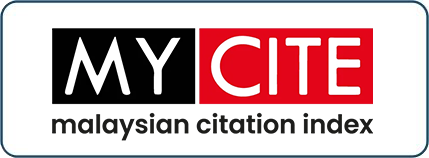Issue Of Sustainability On Light Pollution From The Perspective Of Maqasid Shariah
DOI:
https://doi.org/10.33102/jfatwa.vol26no2.390Keywords:
Light pollution, Sustainability, Brundtland Commission, Maqasid Shariah, Islamic Jurisprudence.Abstract
In the growing tension of discussing human development, sustainability is endorsed as the answer to providing a just and balanced resolution. A notion of sustaining one field is defined as the notion to preserve and conserve the available resources for the sake of current and future consumption. However, there are many regards to sustainability, particularly one interpreted by the Brundtland commission, to be ambiguous and inoperative. An ambiguous concept of sustainability leads to mismanaged city development and urban growth that overlooks the danger of light pollution, which adversely affects human welfare. Given this phenomenon, this paper seeks to examine the dangers of light pollution under the framework Islamic Jurisprudence Principle of Maqasid Shariah. To draw parameters on how this concept could be well adopted in sustain light pollution, the elements and principles embedded in this holistic concept shall then appraised. This study adopts a qualitative method based on content and doctrinal analysis in reviewing and analyzing relevant documents, commission, and other literary work. The study shows that framing the dangers of light pollution, Maqasid Shariah covers a more comprehensive, including the perseveration of human life, intellectual, progeny and property. This study further submits and considers the extent to which the recommendations drawn from this study would enhance the understanding of light pollution threat amongst the city planner, economic player, and policymaker, thereby mitigating and reducing the light pollution crisis.
Downloads
References
Bhurosy, T., Niu, Z., & Heckman, C. J. (2020). Breastfeeding is possible: a systematic review on the feasibility and challenges of breastfeeding among breast cancer survivors of reproductive age. Annals of Surgical Oncology, 1–13.
Gaston, K. (2013). A green light for efficiency. Nature, 497, 560–561.
Gaston, K. J., Bennie, J., Davies, T. W., & Hopkins, J. (2013). The ecological impacts of nighttime light pollution: a mechanistic appraisal. Biological Reviews, 88(4), 767–1021.
Kloog, I., Stevens, R. G., Haim, A., & Portnov, B. A. (2010). Nighttime light level co-distributes with breast cancer incidence worldwide. Cancer Causes Control, 21(12), 2059–2068.
E-Book
Chepesiuk, R. (2009). Missing the dark: Health effects of light pollution. Environmental Health Perspectives, 117(1), 20–27. https://doi.org/10.1289/ehp.117-a20
Falchi, F., Cinzano, P., Duriscoe, D., Kyba, C. C. M., Elvidge, C. D., Baugh, K., … Furgoni, R. (2016). The new world atlas of artificial night sky brightness. Science Advances, 2(6), e1600377–e1600377. https://doi.org/10.1126/sciadv.1600377
Falchi, F., Cinzano, P., Elvidge, C. D., Keith, D. M., & Haim, A. (2011). Limiting the impact of light pollution on human health, environment and stellar visibility. Journal of Environmental Management, 92(10), 2714–2722. https://doi.org/10.1016/j.jenvman.2011.06.029
Gallaway, T., Olsen, R. N., & Mitchell, D. M. (2010). The economics of global light pollution. Ecological Economics, 69(3), 658–665. https://doi.org/10.1016/j.ecolecon.2009.10.003
Haim, A., & Portnov, B. A. (2013). Light pollution as a new risk factor for human breast and prostate cancers. Light Pollution as a New Risk Factor for Human Breast and Prostate Cancers. https://doi.org/10.1007/978-94-007-6220-6
Harb, F., Hidalgo, M. P., & Martau, B. (2015). Lack of exposure to natural light in the workspace is associated with physiological, sleep and depressive symptoms. Chronobiology International. https://doi.org/10.3109/07420528.2014.982757
Hölker, F., Moss, T., Griefahn, B., Kloas, W., Voigt, C. C., Henckel, D., … Tockner, K. (2010). The dark side of light: a transdisciplinary research agenda for light pollution policy. Ecology and Society, 15, e13; URL: http://www.ecologyandsociety.org/vol15/i. https://doi.org/10.1016/j.tree.2010.09.007
Horvath, G., Kriska, G., Malik, P., & Robertson, B. (2009). Polarized light pollution: A new kind of ecological photo pollution. Frontiers in Ecology and the Environment, 7(6), 317–325. https://doi.org/10.1890/080129
Kernbach, M. E., Cassone, V. M., Unnasch, T. R., & Martin, L. B. (2020). Broad-spectrum light pollution suppresses melatonin and increases West Nile virus-induced mortality in House Sparrows (Passer domesticus). Condor. https://doi.org/10.1093/condor/duaa018
Kernbach, M. E., Newhouse, D. J., Miller, J. M., Hall, R. J., Gibbons, J., Oberstaller, J., … Martin, L. B. (2019). Light pollution increases West Nile virus competence of a ubiquitous passerine reservoir species. Proceedings of the Royal Society B: Biological Sciences. https://doi.org/10.1098/rspb.2019.1051
Kim, K. Y., Lee, E., Kim, Y. J., & Kim, J. (2017). The association between artificial light at night and prostate cancer in Gwangju City and South Jeolla Province of South Korea. Chronobiology International. https://doi.org/10.1080/07420528.2016.1259241
Navara, K. J., & Nelson, R. J. (2007). The dark side of light at night: physiological, epidemiological, and ecological consequences. Journal of Pineal Research, 43, 215–224. https://doi.org/10.1111/j.1600-079X.2007.00473.x
Smolensky, M. (2013). Review of Light pollution as a new risk factor for human breast and prostate cancers. Chronobiology International (Vol. 30). https://doi.org/10.3109/07420528.2013.834173
Stevens, R. G. (2006). Artificial lighting in the industrialized world: Circadian disruption and breast cancer. Cancer Causes and Control. https://doi.org/10.1007/s10552-005-9001-x
Journal
Faid, M. S., Shariff, N. N. M., Hamidi, Z. S., Husien, N., Ali, M. O., Zainol, N. H., & Sabri, S. N. U. (2016). Monitoring the level of Light Pollution and its Impact on Astronomical Bodies Naked-Eye Visibility Range in Selected Areas in Malaysia using Sky Quality Meter. Journal of Industrial Engineering and Management Science, 1, 1–18.
Farhood, B., Mortezaee, K., Haghi‐Aminjan, H., Khanlarkhani, N., Salehi, E., Nashtaei, M. S., … Sahebkar, A. (2019). A systematic review of radiation‐induced testicular toxicities following radiotherapy for prostate cancer. Journal of Cellular Physiology, 234(9), 14828–14837.
Shariff, N. N. M., Hamidi, Z. S., Musa, A. H., Osman, M. R., & Faid, M. S. (2015). Creating Awareness on Light Pollution’ (CALP) Project as a Platform in Advancing Secondary Science Education. In International Conference of Education, Research and Innovation, Seville. Spain.
Downloads
Published
Issue
Section
License
Copyright (c) 2021 Muhamad Syazwan Faid, Mohd Saiful Anwar Mohd Nawawi, Mohd Paidi Norman

This work is licensed under a Creative Commons Attribution 4.0 International License.
The copyright of this article will be vested to author(s) and granted the journal right of first publication with the work simultaneously licensed under the Creative Commons Attribution 4.0 International (CC BY 4.0) license, unless otherwise stated.















